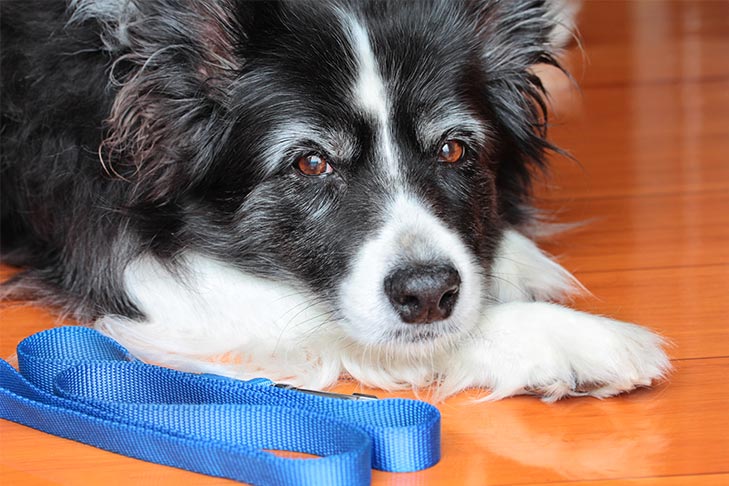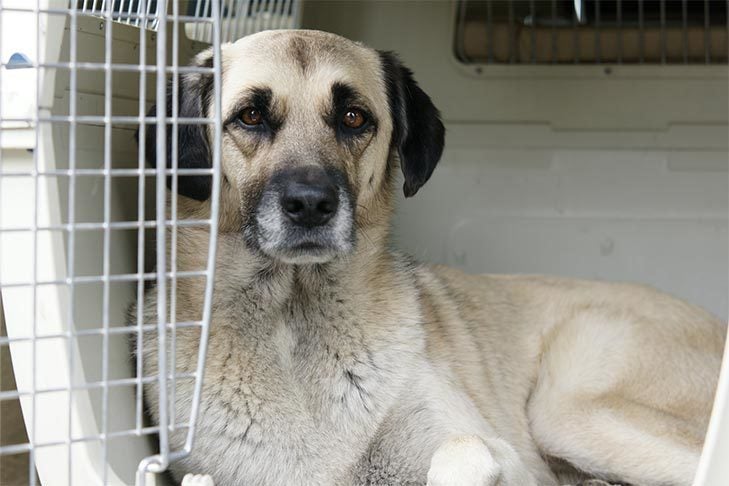
If you have rescued an adult dog, congratulations! You are one of the lucky people who will find out how rewarding it can be to give a good home to a senior dog.
Adult dogs bond just as readily as puppies do, and one of the benefits is that housetraining is often a much easier process for them.
Some reasons why an older dog might not be house trained:
- No one ever bothered to train him.
- They may never have lived indoors.
- They may have spent a long time in a place where they could only go on concrete, paper in a pen, bedding in a crate, etc.
- Senior dogs may prefer an indoor bathroom option
An adult dog’s ability to “hold it” for several hours is what can make the process easier than it is for a puppy. This does not mean that you should force her to do so, however. Give her plenty of opportunities to learn by frequently taking her outside to the place you want her to use. Reward generously with treats and praise when successful.
Adult Dog Potty-Training Routine
Establish a firm routine, including feeding meals at regular times. Pick up the dish 10 to 15 minutes after putting it down, empty or not. Do not use the free-choice feeding method in which food is left down at all times. This will help to keep her system on a schedule. Use a leash and go outside with her; don’t simply let her out into the yard by herself and hope for the best.
Trainers often hear about dogs who have accidents indoors just after having been outside. They aren’t trying to annoy you; you probably just didn’t stay out long enough. Dogs sometimes need a little time to sniff around, exercise, and check things out before relieving themselves.The more chances she has to do her business outside, the faster she will learn what’s expected.
Take her out first thing in the morning, after breakfast, after dinner, and a few times throughout the day and before bedtime. If she doesn’t go, bring her back inside and immediately put her in her crate for 10 minutes before trying again. Do not let her loose indoors if she has not eliminated outside!

About that crate: it’s a wonderful tool for house training. Any time you cannot supervise your dog, he should be in a crate or pen, or in a smaller room behind a baby gate. You can also keep him near you with a leash. Gradually, over a few weeks, you can allow a little freedom, 10 or 15 minutes after he eliminated outside. There may be an accident, but don’t punish the dog.
If you frighten or punish him, he might become afraid to potty in front of you and will sneak off to do it somewhere else. If you catch your dog having an accident, say something to get his attention, but do not yell or make such a loud noise that you scare him. Then take him right outside so he can finish. Clean up with enzyme cleaner and try to be more observant of your dog’s behavior.
How to Know When Your Dog Has to Go
You might see pacing, whining, circling, sniffing purposefully, or leaving the room. These mean: take me out right now! Not every dog will give you a signal such as barking or scratching at the door. You can train these behaviors, but if you learn to recognize the signs and respond quickly, she will probably figure it out and start “asking” because you get up and let her out right away when she does these things.
Your dog may have a hard time adjusting to eliminating on grass or dirt because he’s never gone on a surface other than concrete, for example. Try taking him in the car to a quiet park. In your own yard, maybe you can have a friend’s dog come over to help your new friend get the idea. Most dogs will usually go in a spot where other dogs have already gone.
Be extra patient. Your canine companion wants to do the right thing and he just needs a little help from you to figure it out.
Have a puppy who needs some housetraining tips? Find out how to best help your pup here.

